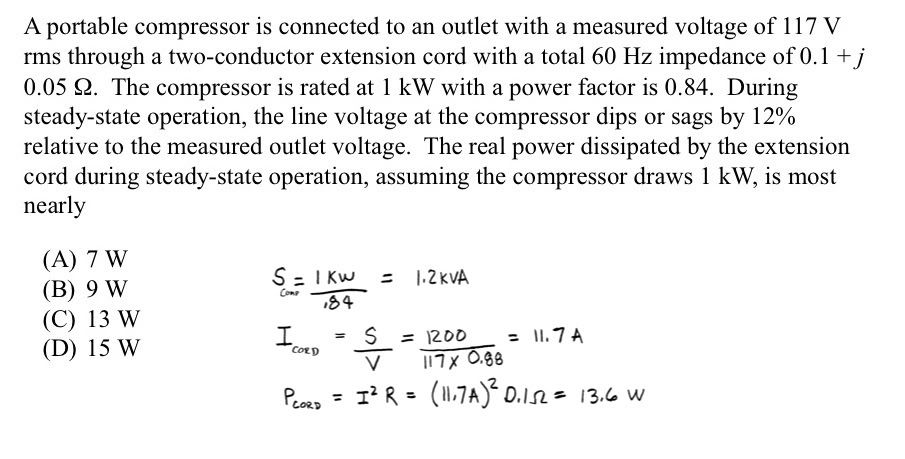BamaBino
Well-known member
The answer is suppose to be C.
Do y'all agree with my solution?

Do y'all agree with my solution?



I agree.The answer is suppose to be C.Do y'all agree with my solution?

So is our conclusion that the cable is not sized properly, resulting in too high of a voltage drop? To me, 14V makes sense for starting, but not for running.The solution given is correct. The extension cord impedance has a problem though. Dropping 14 volts across an impedance of approximately 0.1 ohms will require over 100 amps.







Ok, I'll play his game:The voltage at the inlet is not in-phase with the voltage at the compressor--therefore, you should be careful about
subtracting only the amplitudes of _phasor_ voltages!!
Enter your email address to join:
